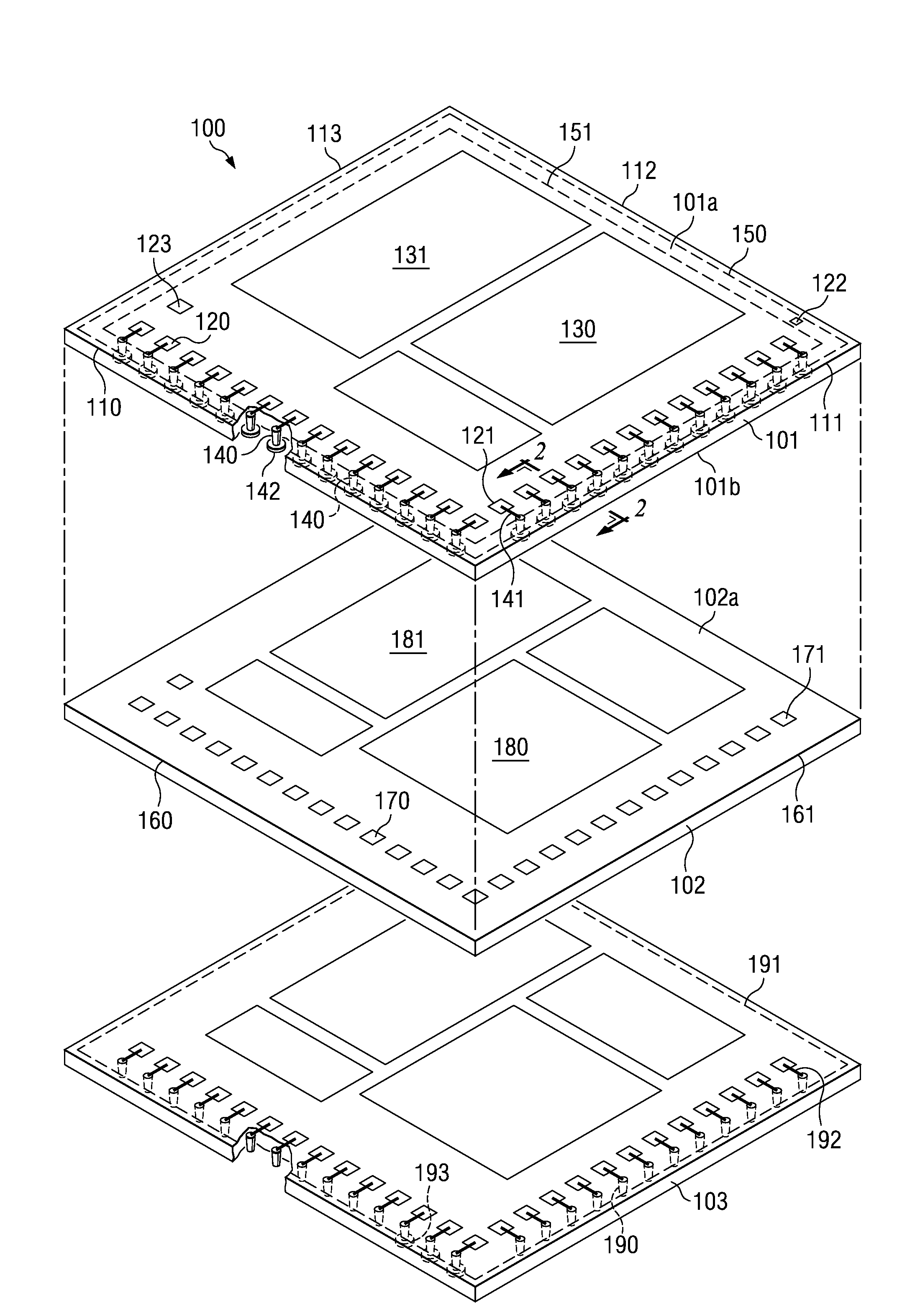Method for Stacking Semiconductor Chips
a technology of semiconductor chips and stacking methods, which is applied in the direction of semiconductor devices, semiconductor/solid-state device details, electrical equipment, etc., can solve the problems of increasing the complexity of the product, the cost per functional unit should drop, and the increase of the functional complexity paralleled by the equivalent increase in the reliability of the produ
- Summary
- Abstract
- Description
- Claims
- Application Information
AI Technical Summary
Benefits of technology
Problems solved by technology
Method used
Image
Examples
Embodiment Construction
[0031]FIG. 1 depicts an embodiment of the invention; the schematic perspective view shows two semiconductor chips 101 and 102 to be assembled into a chip stack generally designated 100. The top chip 101 and the bottom chip 102 exhibit features according to the invention, which facilitate the stack assembly without the need for redesigning the circuitry of either chip. As a consequence, the assembly of the chip-stack product 100 creates a device, which combines the characteristics of existing chip 101 as well as existing chip 102 without spending the effort, time and cost to design the new device or to modify the circuitry of either chip.
[0032]Semiconductor chip 101 has edges 110, 111, 112, and 113; it further has first surface 101a and second surface 101b. First surface 101a includes first contact pads 120 near edge 110, contact pads 121 near edge 111, contact pads 122 near edge 112, and contact pads 123 near edge 113. Chip 101 has active components, such as integrated circuits 130 ...
PUM
 Login to View More
Login to View More Abstract
Description
Claims
Application Information
 Login to View More
Login to View More - R&D
- Intellectual Property
- Life Sciences
- Materials
- Tech Scout
- Unparalleled Data Quality
- Higher Quality Content
- 60% Fewer Hallucinations
Browse by: Latest US Patents, China's latest patents, Technical Efficacy Thesaurus, Application Domain, Technology Topic, Popular Technical Reports.
© 2025 PatSnap. All rights reserved.Legal|Privacy policy|Modern Slavery Act Transparency Statement|Sitemap|About US| Contact US: help@patsnap.com



